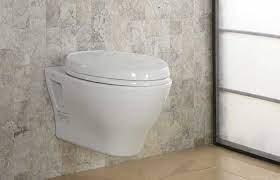Tankless toilets are becoming increasingly popular in modern homes due to their sleek design, water-saving features, and convenience. However, like any other plumbing fixture, they may experience problems that can affect their performance. Here are some common tankless toilet problems and their possible solutions.
Clogging
Clogging is a common problem with tankless toilets. The most common cause of clogging is flushing large items down the toilet, such as baby wipes, feminine hygiene products, or paper towels. These items can get stuck in the toilet’s drain, causing a blockage.
Solution: To prevent clogging, only flush toilet paper and human waste down the toilet. Avoid flushing any other items down the toilet, including so-called “flushable” wipes. If the toilet is clogged, use a plunger to try and clear the blockage. If the blockage persists, call a plumber to avoid causing further damage.
Running Water
Another common problem with tankless toilets is running water. This can be caused by a leak in the toilet’s tankless mechanism or a malfunctioning valve.
Solution: First, check the toilet’s water supply line to ensure that it is fully open. The water supply line is not the problem, check the toilet’s valve to see if it is properly functioning. If the valve is malfunctioning, it may need to be replaced. If these solutions do not work, contact a plumber to diagnose and repair the problem.
Inconsistent Flushing
If your tankless toilet is flushing inconsistently or not at all, there could be a problem with the toilet’s water supply or a malfunctioning sensor.
Solution: First, check the toilet’s water supply line to ensure that it is fully open. The water supply line is not the problem, check the toilet’s sensor to see if it is properly functioning. If the sensor is malfunctioning, it may need to be replaced. If these solutions do not work, contact a plumber to diagnose and repair the problem.
Unusual Noises
If you hear unusual noises coming from your tankless toilet, such as gurgling or whistling sounds, this could indicate a problem with the toilet’s venting system.
Solution: Check the toilet’s venting system to ensure that it is clear of any obstructions or debris. If the venting system is clear, the problem may be with the toilet’s trap or drain, which may need to be cleared or replaced. If these solutions do not work, contact a plumber to diagnose and repair the problem.
Smells
If your tankless toilet is emitting unpleasant odors, this could be a sign of a problem with the toilet’s trap or sewer line.
Solution: Check the toilet’s trap to ensure that it not dry out. If the trap is dry, pour water into the toilet bowl to fill the trap. If the odor persists, it may be a sign of a problem with the toilet’s sewer line, which may need to be cleaned or replaced. Contact a plumber to diagnose and repair the problem.
Not Enough Water Pressure
If your tankless toilet is not producing enough water pressure, this could be a sign of a problem with the toilet’s supply line or valve.
Solution: First, check the toilet’s water supply line to ensure that it is fully open. The water supply line is not the problem, check the toilet’s valve to see if it is properly functioning. The valve is malfunctioning, it may need to replace. If these solutions do not work, contact a plumber to diagnose and repair the problem.
In summary, tankless toilets are an efficient and convenient plumbing fixture, but like any other fixture, they may experience problems from time to time. Common tankless toilet problems include clogging, running water, inconsistent flushing, unusual noises, smells, and not enough water pressure. To prevent these problems, it is important to properly maintain your toilet and avoid flushing any items down the toilet that may cause clogging. If you do experience any of these problems, it is important to address them promptly to prevent further damage or costly repairs.
Regular maintenance of your tankless toilet can prevent many of these problems. Here are some tips for maintaining your tankless toilet:
Clean the Toilet Regularly
Cleaning your toilet regularly can help prevent clogs and odors. Use a non-abrasive cleaner to clean the inside of the bowl, and a soft cloth to clean the exterior.
Check the Water Supply Line
Regularly check the water supply line to ensure that it is fully open and functioning properly. If there is low water pressure, check for leaks or clogs in the line.
Avoid Flushing Non-Flushable Items
Only flush toilet paper and human waste down the toilet. Avoid flushing any other items down the toilet, including so-called “flushable” wipes.
Test the Sensor
Regularly test the sensor on your toilet to ensure that it is functioning properly. Follow the manufacturer’s instructions for testing the sensor.
Schedule Regular Maintenance
Schedule regular maintenance with a plumber to ensure that your toilet is functioning properly and to address any potential problems before they become more serious.
In conclusion, tankless toilets are an efficient and convenient plumbing fixture, but they may experience problems from time to time. Common problems include clogging, running water, inconsistent flushing, unusual noises, smells, and not enough water pressure. To prevent these problems, it is important to properly maintain your toilet and avoid flushing any non-flushable items down the toilet. Regular maintenance can prevent many of these problems, and addressing any problems promptly can prevent further damage or costly repairs.

